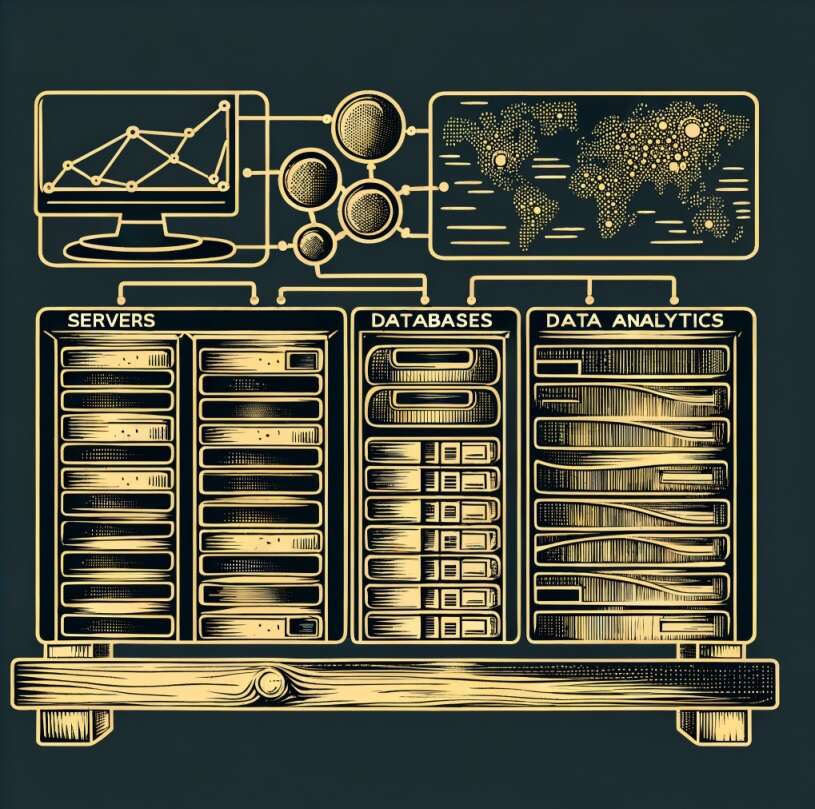
It should surprise no one that financial services institutions sit on a treasure trove of data. Generated by the interactions with consumers, market movements and the ebb and flow of internal operations, these statistics – if properly harnessed – can have a transformative impact on the business’s fortunes. With the right distillation of data, a CFO could find new ways to close a quarter early, a logistics chief straighten out an increasingly knotty supply chain or a CIO finally realise how best to build personalised financial products for their bank’s swelling army of customers.
Sentences like that, of course, are the reason behind the enduring popularity of the phrase “that’s easier said than done.” Harnessing the power of data for a bank or a fintech means finding a way to wrangle millions if not billions of data points into patterns and forecasts that are genuinely useful for your average CEO or CIO in the sector. That requires more than a deft hand with Excel spreadsheets – it necessitates a thoughtful, holistic strategy for automating the process of discovering and analysing the data of your business at scale.

The right data analytics stack
The technologies at the disposal of CIOs to modernise the data management journey across the entire stack have never been better. Evidence of this can be seen in the growing prominence of cloud-based data warehouses, as well as in the confidence shown by financial service IT teams over the past year to quickly build their own LLMs based on internal training data.
Despite this clear trajectory to data maturity, though, many organisations just aren’t able to unlock the full potential of their data to ensure it drives business value, even as it continues to grow in volume and variety. According to the European Commission, 80 per cent of the data collected in the industry remains unused. Many are still overspending on the cloud, or they’re saddled with tool sprawl and buying software licences that sit unused. Put simply, many organisations’ data analytics stacks aren’t set up to take advantage of the technologies available.
A data analytics stack is needed that more effectively addresses the various roles and use cases found in today’s financial services industry. It should have the flexibility required to support multiple deployment scenarios: for example, managing data pipelines regardless as to whether they are on-premise, private cloud, public cloud, multi-cloud, or hybrid. Similarly, it should allow operatives to transform their data in any data warehouse environment they choose and enable them to build a data workflow in one place and execute it in another.
Perhaps most importantly, the right data analytics stack should empower a company’s workforce to get the most from its technologies. It should be accessible – ideally, low-code, or even no-code – making it easy for anyone, not just data scientists or engineers, to compile and analyse data. Whether it’s developing personalised offerings for customers, reducing churn, or ensuring regulatory compliance, each line of business should have the ability to creatively solve its own analytic problems and apply its own domain knowledge to relevant and impactful use cases.

Automating to support regulatory compliance
To illustrate just one of the benefits of a tech stack capable of automating data analytics, consider how they can be used to ensure regulatory compliance.
Regulations such as MiFIR and MiFID II require financial institutions to report applicable transactions. But, given that millions of transactions can happen every minute – especially at larger institutions – manually preparing and cleansing the data for quality assurance (QA) can be an extremely slow process. As a result, it can take up to two months for the appropriate regulators to be notified, leaving financial institutions vulnerable to regulatory fines should any part of the system fail and require correcting.
An automated data analytics stack, combining data engineering capabilities with a mixture of visual analytics tools, can be used to create a streamlined workflow that alerts institutions in real time if they’re required to make corrections to ensure compliance. This transforms the QA process from being reactive to proactive, allowing teams to address issues as they occur rather than waiting months for results and thereby mitigating the risk of potentially costly mistakes.
This is just one example. Automated data analytics can be applied to almost any business use case, enabling financial services institutions to deploy an analytics strategy to identify new opportunities, more easily comply with regulations, meet ESG criteria, and more.
In this new era of data value, a modern automated data analytics stack equipped with a simple and accessible interface will allow everyone within a financial services firm to deliver that value to stakeholders both within and outside of their organisation.






